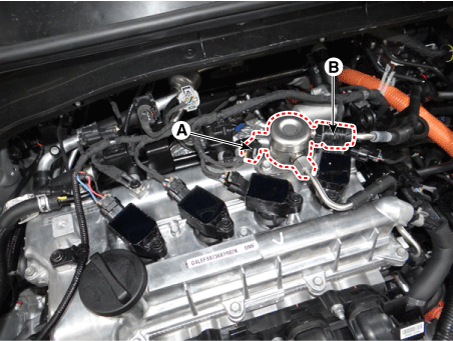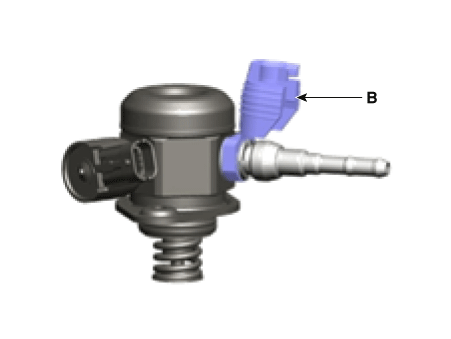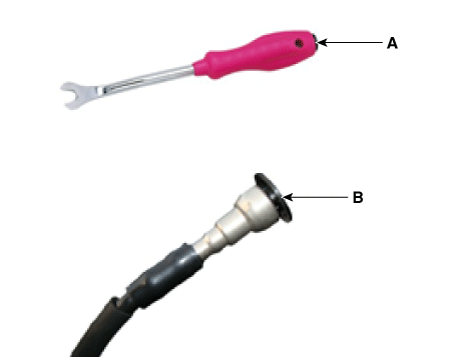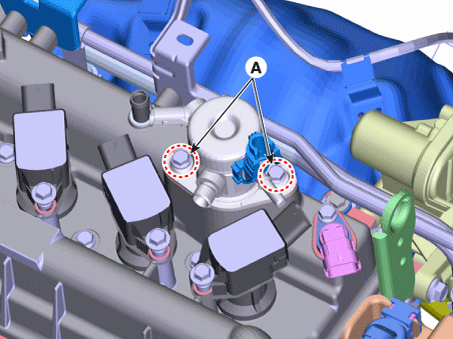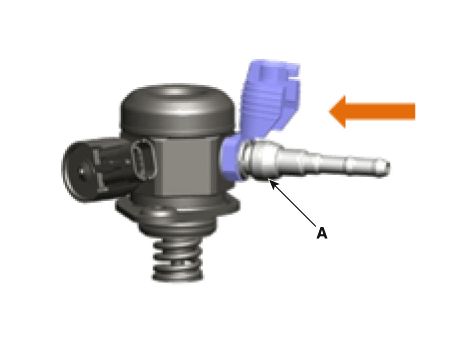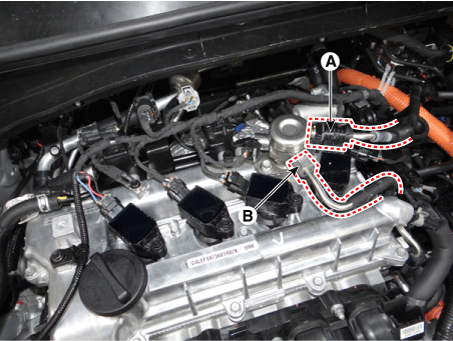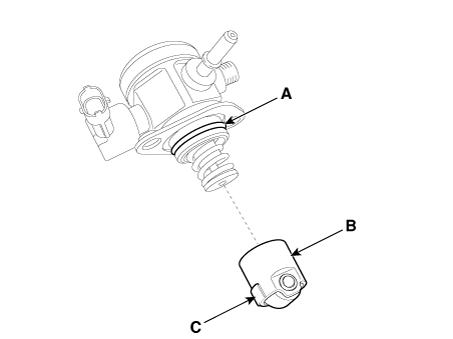Kia Niro: Fuel Delivery System / High Pressure Fuel Pump Repair procedures
| Removal |
In case of removing the high pressure fuel pump, high pressure fuel pipe, delivery pipe, and injector, there may be injury caused by leakage of the high pressure fuel. So don’t do any repair work right after engine stops. |
| 1. |
Release the residual pressure in fuel line. (Refer to the Fuel Delivery System - "Release Residual Pressure in Fuel Line"). |
| 2. |
Switch "OFF" the ignition and disconnect the negative (-) terminal of the auxiliary 12V battery. |
| 3. |
Remove the air cleaner and intake hose. (Refer to Mechanical System - "Air Cleaner") |
| 4. |
Disconnect the fuel pressure control valve connector (A). |
| 5. |
Disconnect the feed tube quick-connector (B) by using a clip tool.
|
| 6. |
Remove the high pressure fuel pipe. (Refer to Fuel Delivery System - "Fuel Line") |
| 7. |
Remove the installation bolts (A), and then remove the high pressure fuel pump (B) from the cylinder head assembly.
|
| Installation |
|
|
|
|
|
|
|
|
| 1. |
Install in the reverse order of removal.
|
 Delivery Pipe Repair procedures
Delivery Pipe Repair procedures
Removal
In case of removing the high pressure fuel pump, high pressure fuel pipe,
delivery pipe, and injector, th ...
 Clutch System
Clutch System
...
Other information:
Kia Niro (DE HEV) Owners Manual: Steering wheel remote control
❈ The actual features in the vehicle may differ from the illustration.
(1) MUTE
Press to mute audio output.
(2) MODE
Press the button to change the mode in the following order: Radio ➟ Media.
(3) VOLUME
Press to adjust the volume. (4) UP/DOWN
Press the button in radio mode ...
Kia Niro 2017 (DE HEV) Service Manual: Pressure Source Unit Components and components location
Components
1. Pressure Source Unit (PSU)
2. Motor
3. Filler adapter
4. Accumulator
5. Bracket
...


